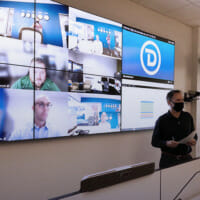IN THE MEDIA
The Expansion of Virtualization
How broadcasters are looking to take virtualization off-premise, either in control hubs and data centers or through public cloud platforms.
 Virtualization is the act of taking functions that are run by dedicated hardware and moving them to software running on common-off-the-shelf (COTS) hardware. It’s something that networks and major station groups have been seeking to do for years to standardize technology, reduce costs and gain operational efficiency.
Virtualization is the act of taking functions that are run by dedicated hardware and moving them to software running on common-off-the-shelf (COTS) hardware. It’s something that networks and major station groups have been seeking to do for years to standardize technology, reduce costs and gain operational efficiency.
The concept of virtualization in television operations has expanded as broadcasters look to implement it throughout the entire broadcast chain. And, broadcasters are also looking to take virtualization off-premise, either in their own master control hubs and data centers or through public cloud platforms.
Diversified has seen an increase in centralized monitoring through several virtualization projects with large station groups. The groups moved to a “hub-and-spoke” model, with the goal being to remove as much physical equipment as possible from the local stations or “spokes” and consolidate functions at a master control hub, said Jason Kornweiss, VP and GM of Emerging Technology and Solutions for Diversified.
“The impetus was we’ve got x number of TV stations built over time with disparate equipment, and pieces of gear within the release path are in different locations and in need of standardization,” Kornweiss adds. “Like, where do you put your school closing ticker and where do you put your closed captioning encoder? And it varies by market on its way to the transmitter. So, they’re chasing standardization through virtualization of as many parts of the product as they can.”







